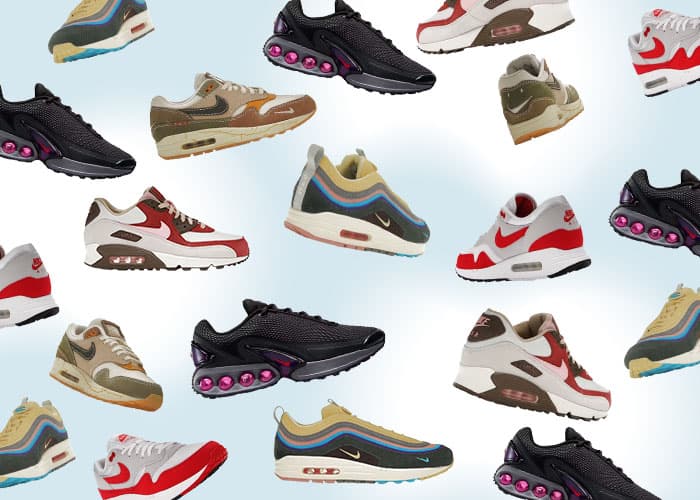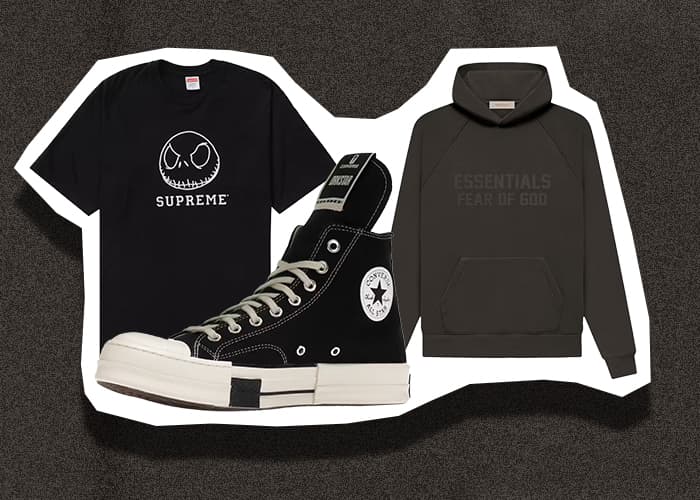I’ve rewritten this editorial piece at least three different times. It’s not because of procrastination or disinterest in the topic. It’s because it’s impossible to encapsulate the entire Black sneaker experience in just a few paragraphs. But as both a Black writer and sneakerhead at heart, it felt important to talk about my experiences with sneaker culture and what it means to be a Black member within it.
To reiterate, these are MY experiences. I make that distinction because sneakers are often very personal items, despite being something most people can relate to. For some, sneakers represent a newfound sense of independence. For others, they offer a new perspective on what one can do for a career. For me, sneakers have helped me discover what it means to be a Black creative and a lover of aesthetics, and in a way, they’ve helped shape my identity.

Me back in 2014 in my college dorm room, posing for, what I thought, was a very “notes”-worthy Tumblr image.
I used to read a lot of sneaker publications. In 2011, a young, eager, and extremely broke Elhadji would stay up on his hand-me-down Dell laptop and read about releases. I couldn’t get enough of the content that Sneakernews.com was dishing out, so much so, that I was saving pictures on my laptop from their site. What really got my love for sneakers going even more was Tumblr. Seeing the countless images of old Jordan 11s and Nike Air Mags piqued my interest and gave me a first-hand lesson on Supreme and Stüssy.
I wish I could say that I came across sneakers on my own volition and that doing all of this research was out of genuine interest, but that would be a lie. Like most kids at the malleable age of 14, I was influenced by my peers around me in hopes of fitting in. And a lot of those kids were white, came from rich, upper west and east side Manhattan households, and had access to their parent’s disposable income. These kids were casually rocking sneakers that would be considered holy grails today, like Supreme SB Dunk High Stars, What The Dunk SB Lows, Staple New Balance 575s, and many more. Meanwhile, I would go to school in whatever Modell’s (IYKYK) clearance sneakers my mom could get for me. I desperately wanted to have what they had.
The 999 made me a New Balance fiend. Naturally, in college when I shot this, I would argue that this was a fire photo.
Typical Outfit Grid. Varsity Red 6s were and still are my favorite.
The ASICS Gel-Lyte V was something I geeked out about when it returned.
Very underrated pair of Pumas.
But what didn’t dawn on me back then was just how much those white kids were influenced by Black culture. These kids were following a path that was originally set for them by rappers, artists, designers, and athletes–the majority of which are people of color. Black culture is what helped make sneakers as cool and impactful as they are today. If I just, instead, looked at those they were influenced by, then maybe I wouldn’t have first gotten into sneakers for the clout of it all. Maybe then, I would’ve dove beyond the stylistic and superficial surface of it and saw sneakers as a way to feel a part of and inspired by my own culture.
In the midst of growing up and trying to find an identity for myself through sneakers, I came to realize just how Black this subculture truly was. I learned about RUN DMC’s historic partnership with adidas, the DMV’s admiration for New Balance runners, everything Michael Jordan did for the Nike brand, and Kanye West’s at-the-time meteoric impact on sneaker fashion. Here I was, a kid that was constantly around white boys, thinking they were on to something and we were all just trying to play catchup. It was the complete opposite. It’s undeniable that sneaker culture wouldn’t be where it is today without the innovations and influence of Black people.

The mentioned Jordan 3 Black Cements, just drenched in VSCO filters. I think the caption for this one was “Cement on Cement”. Real copywriting gold right there.
I should’ve known that sneakers were a “Black” thing from my first time waiting in line for a Jordan drop. It was 2011’s Air Jordan 3 Black Cement. My parents joined me at the release because they were concerned about my well-being, and rightfully so. This was during Nike’s infamous midnight drops and many people would get robbed for their purchases as soon they came out of the store. But this experience that I had on 125th Street’s House of Hoops was anything but precarious. I remember all of the great conversations I had with other avid sneaker lovers, both tenured and new, sharing stories of other release experiences, their favorite Jordans, and just pure nostalgic moments. From what I recall, I didn’t even get the sneakers there, because by the time I got up to the door, one of the clerks announced, “We’re out of sizes 10, 10 and a half, and 11 and a half.” Even though I couldn’t secure a pair there (but was able to grab my size at the Champs down the street later that morning). I still remember that time fondly, and it drew me closer to what sneaker culture is all about. From a Black perspective, this culture is greatly steeped in Blackness, from community to style through and through, and it allowed me to dive deeper into its Black roots.
The more I gravitated towards sneakers and learned about their ties to Black culture, the more that I found my footing with that culture myself. While investing in sneakers with the money I’d saved from summer jobs, I became interested in how other Black creatives like Pharrell Williams and A$AP Rocky would style their pieces. I discovered just how much I valued design, colors, form, and textures thanks to certain Jordan and ASICS releases. Visual ads, featuring the likes of Spike Lee and Tyler, the Creator showed me the marketing side of sneakers, helping me to realize that it might be a possible career to pursue. Being a Black sneakerhead and upholding both new and similar values as other Black people in the space allowed me to discover a new side of myself that I didn’t realize was there. And ultimately led me to my position at StockX today.
I owe a lot to sneaker culture and to the Black pioneers that have paved the way for creatives like myself to thrive and be a part of it. In a full circle moment, I now write editorials similar to the ones I used to read on that old Dell laptop when I was younger. I work on campaigns, creating content that I would’ve found engaging as a kid. I think of outfits in a similar way to those that I looked up to while growing up. And I do all of this as a homage to those pioneering Black influencers. Hopefully, my work will spark the same level of intrigue in a younger generation looking to dive into this amazing community.






























